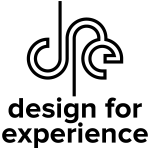“We know that the incidences of mobile and multi-screen use are increasing rapidly,” DfE judge Dr. Susan Weinschenk writes in a very popular article, “The Five Worst UX Mistakes Websites Make,” which appeared in UX Magazine earlier this year.
“People are accessing websites on smartphones and tablets. They are starting on their smartphones and then switching to tablets. They are viewing something on their laptop while also looking at something else on their smartphone.”
“Unless you are sure that your target audience is visiting your website [sitting in front of a large desktop all alone in a quiet space] most of the time, you need to think about a multi-screen, active experience,” she continues. “This is challenging.”
It’s a fact: users interact with products and services through a growing diversity of platforms that range from installed software to mobile apps to smart TVs. Each platform has its own strengths, weaknesses, constraints, uses, and modes of interaction.
The DfE Cross-Platform Experience award recognizes experiences that work across multiple platforms, making the best use of the strengths of each to create an overall experience greater than the sum of its parts.
If you know of prodcuts or services that let users move easily and naturally between platforms, nominate them. If you think that your product or service shows this apptitude for cross-platform finesse, apply for this award right now!
You can also see Dr. Weinschenck at Bend WebCAM in Bend, Ore. October 14–15.
Image of glowing devices courtesy Shutterstock








